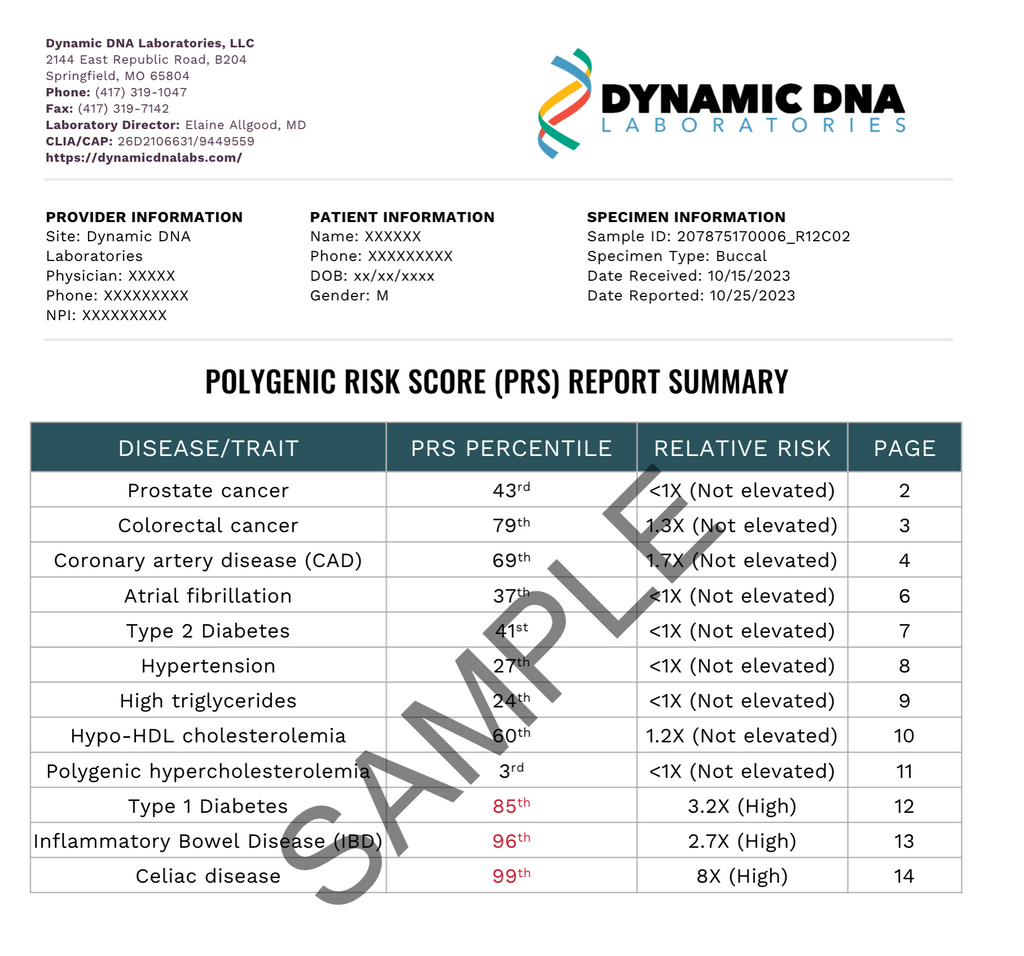Go Beyond Traditional Risk Factors
**Recommended for Determining Future Health Risks.
*Please note that pricing may vary depending on your purchasing location due to factors such as foreign exchange rate, shipping and local taxes.
Genetic risk assessments have come a long way over the years, but traditional risk assessments still focus almost exclusively on rare mutations in single genes, like BRCA1/BRCA2 for breast cancer. Thanks to years of medical research and the development of big datasets, Polygenic Risk Scores can now be used to assess an individual’s genetic risk of common disease and to identify the cause of disease in the absence of other risk factors.
A Polygenic Risk Score (PRS) measures the component of disease risk from many
genetic variants spread throughout the genome. Lifetime risk of disease is
calculated by comparing the tested individual’s PRS to a reference population of the
same ancestry.
Dynamic DNA’s clinical-grade PRS reports are backed by the latest science and
have been developed to present concise, clear and actionable information on
disease risk. By communicating both relative and absolute risk of disease together
with recommendations on how to mitigate risk, Dynamic DNA’s reports empower
physicians and patients by providing the essential context to genetic risk.
Download Self-Pay Requisition Form
Download Physician Requisition Form
Detecting High-Risk Patients Missed by Standard Screening
Traditional risk assessments often overlook individuals at high risk for complex diseases. Our Polygenic Risk Score (PRS) testing analyzes thousands of genetic markers to provide a more precise, personalized risk evaluation for conditions like heart disease, diabetes, and cancer. By integrating PRS into patient care, healthcare providers can identify at-risk individuals earlier, enabling proactive prevention and targeted treatment. With cutting-edge genetic insights, we empower both patients and providers to make more informed health decisions for better long-term outcomes.

Breast Cancer Risk Assessment
Our PRS testing provides clear, precise insights into an individual’s 5-year and lifetime risk of developing breast cancer, helping guide proactive screening and prevention strategies.











